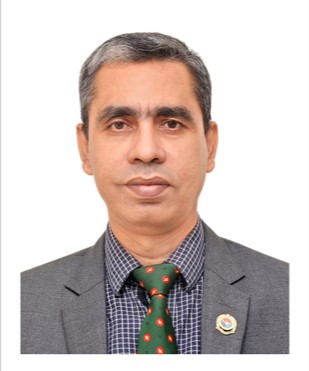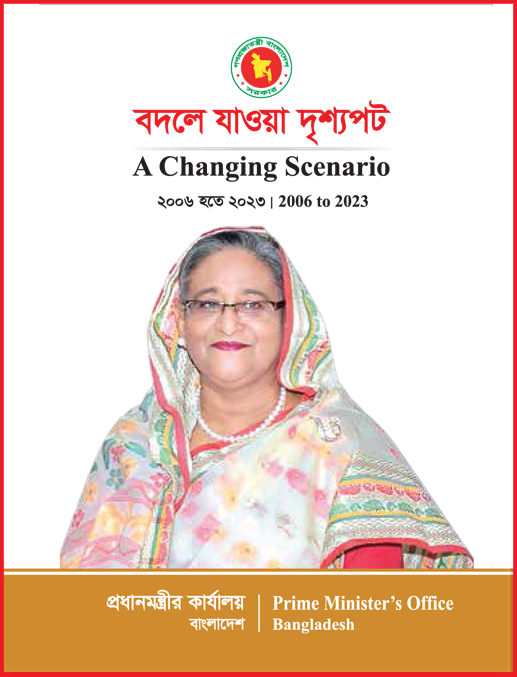সামাজিক ও অর্থনৈতিক প্রভাব
Extension of infrastructure in rural areas is essential for bringing any meaningful change in the rural living patterns. Before our liberation in the year 1971, we had little facilities created for the rural people. Virtually, govt. had little opportunities for expansion of the distribution network in a massive scale. In 1972, Rural Electrification Directorate (under The Bangladesh Power Development Board) was established to gear up efforts towards formation of a separate body responsible for electrifying rural areas. In 1976 NRECA conducted a feasibility study for reaching electricity to each and every rural home and other rural establishments. As a result Rural Electrification Board was formed to take up efforts at bringing changes in rural living patterns.
Over the last 50 years, the program has reached about 462 Upazillas of the country, thus making it a core development program. The program has brought light to many families, hitherto remaining in complete darkness. It has given them the enlightenment towards modern lining, freedom from poverty, malnutrition and hunger. Electricity has brought many families close to the rural homes. Some of them are thinking of taking new initiatives in industrial and agricultural sectors.
Rural Electric Societies have provided jobs to rural families/youths. Rural people now have much better work-habits and an improved sense of discipline and social security, which came as a result of the assurances of basic amenities in life.
Literacy rate in the rural areas has increased significantly due to the expansion of mass education program. Poor workers can attend the night schools at the end of the day’s business. They can also sit beside the children to supervise their education. Living pattern in rural areas have changed due to introduction of new consumer items and like Refrigerator, Television, Radio, Cassette Players, Fans etc. Villages are experiencing a kind of urbanization in the shape of civic amenities, regular education, sanitation and health care and enhanced economic activities. By dint of TV, people are now keeping informed about the latest state of sports, culture and political developments. As the satellite has opened up the world before the eyes, people get acquainted with the world and this ensures their early socialization. The workload of women has reduced and they have sufficient time to watch TV, listen to radio and can assist children in their education. Access to resources, equality of men and women in terms of wage/employment, women trafficking, punishing criminal offences, child trafficking, acid throwing, choice of family planning use, right to participate in the election,- RE program have sped the other development activities in the rural areas. Many new infrastructure development NGOs (non government organizations) and human development bodies have extended their activities in remote rural areas to help govt’s efforts at poverty alleviation and human development. By dint of electricity, NGOs are encouraging varied human endeavors in the form of handicraft development and cross-cultural interchanges. These things ultimately reduce migration towards cities and relieve them of stagnation of infrastructures and civic amenities. On the other hand, it ensures effective and maximum utilization of human and other properties. Speedy electrification of our rural homesteads & other consumers have sped timely utilization of natural and other resources. Women of the rural areas are enjoying the benefits of electricity very well. They can do extra work after household job and add to family earnings. Women are getting self-dependent, making small groups of income generating purposes, specially rearing poultry and cattle, making vegetable farms & taking-up weaving and sewing projects and opening small shops. The use of light during evening ensures women’s safe movement from one place to another. Electricity has left a profound impact on women’s mobility, participation in income generating activities (IGAs), decision-making, freedom of using income and saving, better utilization of credit, knowledge about gender inequality issues, household work plan according to convenience, changes attitude in terms of reducing health care disparities, increase in overall years of schooling for both boys and girls, preference to send girls to schools, awareness of legal issues (i.e., marriage for girls at 18 and boys at 21) and awareness about negative impact of dowry. Women in the electrified households have selected gender equality knowledge, such as, participation with husband in decision-making, purchase/sale of land/livestock, construction/repair of houses, marriage, health and education. Women spend more time on listening radio and watching TV to news and health- nutrition related program than other program. They are gaining much more knowledge and thus produce modernization effect. About 15 areas of knowledge disseminated through radio/TV include value of good health (1), value of education (2), value of female education (3), utility of family planning (4), development of knowledge-base through news (5), improvement in agriculture practice
6), knowledge of modern fishing (7), knowledge of pest management (8), govt. program for the distribution of Khas land (9), prohibition of dowry (10), laws about divorce (11), legal tools to combat violence against women (12), local governance issues (13), women right issues (14) and issues of human rights (15). Electricity has given them special advantage of forming micro irrigation groups in villages, thus revolutionizing the traditional concept of man-run irrigation systems. This is helping them developing entrepreneurial skills and the qualities of leadership. This is leading to a concept of empowerment of women towards better sustainability and solid social existence. Recently, this has drawn fond attention of the development experts round the globe. Rural Electricity has acted as a leap-forward in the development of commercial activities in rural Bangladesh. Out of the total shops in Bangladesh an estimate 24% are using rural electricity. Electrified commercial establishments are more attached to market. In agriculture, rural electricity program (REP) has significantly in attaining food selfsufficiency through use of productive and efficient irrigation equipments. Both land use intensity and cropping intensity with electrified pumps (DTW/STW/LLP) is higher than diesel operated. Average yield per acre under electrified pumps is 24% higher than that of diesel operated ones. Electrified pumps contribute one-third of the food self-sufficiency in Bangladesh. REP through its electrified irrigation pumps covers 4.1 million acres of land for HYV Boro and Aman. REP irrigated land produces 6.43 million tons of HYV Boro and Aman, which is about 29% of all similar types of rice, produced in Bangladesh. 20% rebate to the electric bill to the irrigation pumps sanctioned by govt. induces the farmer to enhance the agricultural growth. As agricultural productivity has increased, availability of rice & other food items in villages have helped rural people maintain better food habits. Industry is the second highest consumer of rural electricity-using 41.53% of the total MWH. A substantial growth in industrial output and value has been added to the national economy. RE-connected industries have strengthened the local industrial base by promoting backward and forward linkages and diversification, which later forms agglomeration by attracting and generating, diversified services. Rural Electrification fits in quite comfortably with the current buzzword in the lexicons of development partners such as poverty alleviation health care, education, food production etc. The program in Bangladesh has already witnessed with manifold and for reaching socioeconomic impact in the electrified areas as stated above. A recent USAID study’s findings and assessments about impact of the rural electrification program in Bangladesh are the following:-
1. Presently 100% villages are electrified and no. of consumers are 3.30 crore.
2. 93.7% at the electrified households (HHs) reported decrease in fuel cost. Average electrified HHs monthly Kerosene savings 1.7 liters in comparison to non-electric HHs, which is 8.6-million liter Kerosene, and of value US$ 3.74 million.
3. Literacy rate in the electrified HHs is 71%, where 54% in the un-electrified HHs.
4. Electrified HHs use daily 50 minutes more than that of non-electrified HHs between sunset and sleep.
5. In the electrified HHs students study 23 minutes more than the non-electrified HHs daily.
6. 78.2% HHs reported an increase on working house.
7. 62.0 % HHs reported an increase in HHs income.
8. 81% HHs reported an increase in reading habits
9. 93.7% reported an increase in children’s study time.
10. 92.0% reported an increase in amusement as well as standard of living.
11. 94.7% reported an improvement in security.
12. Electrified HHs per capita daily food intake 96 gram, 164 Kil. Cal. and per capita protein 46 gram more than that of non-electrified HHs.
13. The annual infant mortality rate in the electrified HHs is 42.7/1000 live births, in the nonelectrified HHs 57.8/1000. Thus annual number of infant deaths that could be saved will be around 36818, i.e., a saving of 101 infant deaths everyday.
14. About 68% of currently married women in the electrified HHs reported of using contraceptive methods, where in the non-electrified HHs the rate is 63%.
15. 61% electrified HHs use hygiene latrine, where only 29% non-electrified HHs use the same latrine.
16. Over 50% Electrified HHs possess TV, TV watching was reported by 70% HHs.
17. Women of the electrified HHs watch TV by 65 minutes; use 56 minutes in income generating and 161 minutes in socio-cultural activities at night daily.
18. 64% women of the electrified HHs reported TV as the main source of knowledge.
19. 11% women of the electrified HHs involve in income generating in handicraft/sewing activities.
20. 53% women of the electrified HHs reported allowing young girls/women to work outside the village.
21. 71% women of the electrified HHs reported that a couple should have two children.
22. Around 25% electrified HHs have radio sets, 39% women listen radio on an average about 27 minutes per day
23. About 18.8 million Bulb, 2.3 million tube light, 8.5 million electric fan, 2.7 million TV, 1.5 million electric iron, .3 million refrigerator, .2 million mobile phone, .1 million juice machine are using in the electrified HHs.
24. Each electric irrigation pump (DTW/STW/LLP) has 12 acres more command area than diesel pumps.
25. Yield of rice by each electric pump 68 kg more than that produced by diesel pump.
26. Total operation cost (price of pump, material cost, labor cost) of each electric pump is US$111 less than that of diesel pump.
27. Annual energy cost (diesel) saving by all electric pumps $2.41 million by not using diesel.
28. Out of all electrified industries 38.5% are as food manufacturing, 20.5% as textile, 13.5% as wood/wood product, 10.3% as metal/metal product, 12.8% as handicrafts, 4.4% as others.
29. Electrified shops remain open about 99 more minutes after sunset in comparison with the un-electrified shops.
30. Creates 5.06 million direct employment opportunities in the electrified irrigation pumps, industries and commercial shops. Based on the empirical findings presented above it would be pertinent to conclude that rural electricity has profound and far-reaching economic, socio-cultural and demographic impacts on life and living of the rural people in Bangladesh. It has significant and sustained impact on agricultural growth, industrialization and business and commercial activities. It has impact on human capital formation through knowledge building mediated through electricity-driven media exposure. Thus, in order to accelerate the process of economic growth, strengthening pro-poor orientation in the growth process, attain the millennium development goal with an emphasis to PRSP and to further boost up human development in Bangladesh access to electricity of the households and social and economic institutions should be expanded within shortest time





















